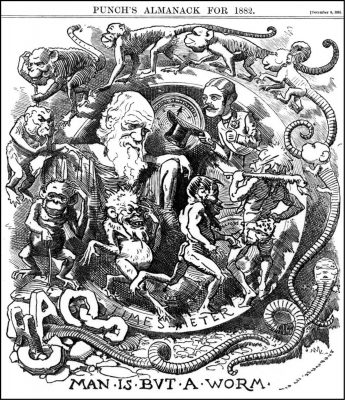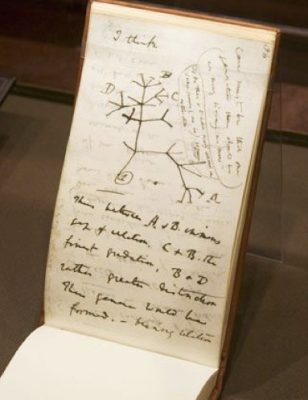The Evolution of Darwin’s Thinking about Evolution
Charles Darwin’s thoughts about how the varieties of living creatures came about changed over many years. His observations made during the Beagle voyage certainly spurred his thinking, it took several years for his ideas to develop fully. This presentation explores his though process and describes the alternatives he considered along the way. Evidence that supported his conclusions will also be described.
Darwin’s Worms
Upon returning to England after the Beagle voyage, Darwin’s uncle Josiah Wedgwood told him his theory of how earthworms tilled his pastures. Charles became fascinated with this subject and he pursued it for the rest of his life. His last
book on the formation of vegetable mold by earthworms became one of his best sellers. In it he described experiments he carried out with his wife, children and grandson to show that earthworms possessed a primitive intelligence. This presentation describes Darwin’s adventures with worms and reveals hidden secrets of their intellectual prowess.
What is a Species?
A species is the basic level of the classification of organisms, so you’d think it would be easy to define the word. But it isn’t. Disagreements have been aired ever since naturalists tried to organize life into neat categories. Life, unfortunately, does not work that way. Darwin even acknowledged this in his most important book. In this presentation we’ll explore how hard it is to organize things when each creature or object have only small differences. We’ll also learn how Darwin immersed himself for eight years in the tedious work of classifying barnacles to teach himself about how minute differences between animals can be so important to their unique lifestyles and how those traits can then be used to call them different species. A cat is a cat and a dog is a dog, but it is not always that easy.
How Li fe Evolves: Darwin’s Theory of Natural Selection
fe Evolves: Darwin’s Theory of Natural Selection
Although the idea of “transmutation of species,” or, as we call it, evolution, did not originate with Charles Darwin, until his publication of “Origin of Species,” there was no comprehensive theory as to how it happened. What is natural selection? This presentation will answer this question by describing how the idea developed in Darwin’s mind. We will also learn how he did experiments to show how it could work. Knowing that it acted very slowly in nature, he turned to domesticated animals and plants to demonstrate the principle of the selection of traits. Although natural selection was slow to gain acceptance among biologists and the details of natural selection remain the subject of scientific debate today, the basic principle has been shown to operate in nature and remains the keystone of biology.
Observing Nature
Charles Darwin said he was born a naturalist. As a child, he collected nearly everything he could get his hands on. Shells, plants, and minerals as well as coins, seals and franks. His fascination with nature continued into his school years and during his time in medical school in Edinburgh he learned to keep meticulous notes about his collections and make detailed observations of his specimens. He also learned the importance of looking for patterns in nature and drawing conclusions from his observations. Though he was an “unfinished naturalist” when he boarded the Beagle, he landed in England five years later a seasoned naturalist. He continued to develop his skills and published studies about barnacles, orchids, earthworms, plant tendrils, coral reefs and the transmission of seeds. His last publication, published less than two weeks before his death, described the dispersal of a bivalve clam on the leg of a duck. An observant naturalist to the very end. We’ll explore Darwin’s fascination with nature and how the skills of keen observation are important for the advancement of our knowledge of nature.